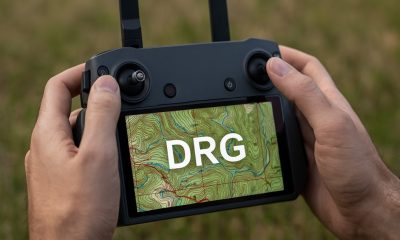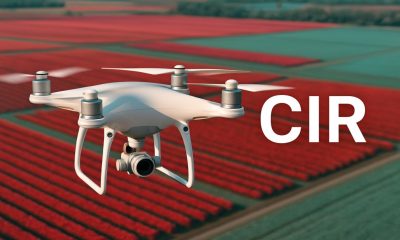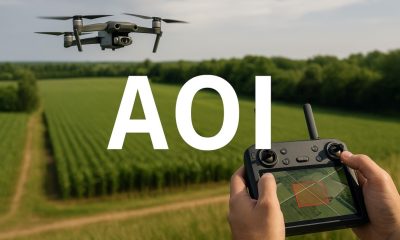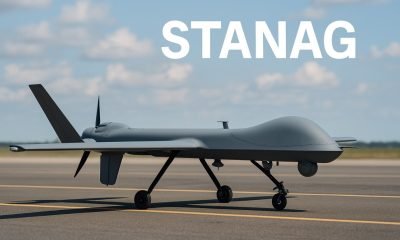- Acronym Guide
- AAM
- ABS
- AC
- ACAS
- ADS-B
- AFAC
- AGL
- AI
- AIM
- ALS
- AM
- AMA
- ANSP
- AOI
- APPI
- AUV
- AUVSI
- ARPAS-UK
- ASTM
- ATC
- BVLOS
- CAA
- CAAC
- CAB
- CASA
- CATT
- CBO
- CBR
- CBRN
- CDMA
- CDR
- CFR
- CIR
- COA
- COMINT
- CORS
- COTP
- COTR
- CPTED
- CV
- C2
- DAA
- DEM
- DFI
- DFS
- DGCA
- DHS
- DOD
- DPA
- DPEs
- DRG
- DRO
- DSM
- DSMX
- DSP
- DSSS
- DTM
- EASA
- EFT
- EO
- EOD
- EO/IR
- ELINT
- EMI
- ESC
- EVLOS
- eVTOLs
- FAA
- FCC
- FCS
- FHSS
- FICCI
- FLIR
- FOB
- FOV
- FPS
- FPV
- GBDAA
- GCP
- GCS
- GDPR
- GML
- GNSS
- GPS
- GSD
- GVC
- HDR
- HOGE
- IACRA
- ICAO
- ICS
- IMU
- INS
- IR
- ISA
- ISR
- ITU
- JARUS
- LAAMS
- LAANC
- LAATM
- LAI
- LBA
- LIDAR
- LOS
- LSALT
- MAC
- MAVLink
- MLIT
- MMS
- MSL
- MTOM
- NDAA
- NCSL
- NFZ
- NIST
- NMEA
- NOTAM
- NPA
- NPRM
- NTIA
- OBIA
- OEM
- OFDM
- OOP
- PASM
- PAV
- PCV
- PdM
- PEC
- PIC
- PID
- PIPL
- PLD
- PM
- PN
- PPK
- PPS
- PSM
- PWM
- UAM
- UAOP
- UAS
- UASTM
- UAV
- UCAVs
- UHD
- UHF
- USV
- UTM
- RAIM
- RCC
- RCS
- RFI
- ReOC
- RePL
- RMS
- ROI
- RPAS
- RPC
- RTH
- RTK
- SaR
- SAR
- SARP
- SBAS
- S.Bus
- SBIR
- SEDENA
- SfM
- SFOC
- SIGINT
- SLAM
- SMS
- SORA
- STANAG
- STTR
- sUAS
- TCAS
- TCCA
- TFR
- TIN
- TOF
- TP
- TPS
- TSA
- VHF
- VLOS
- VTOL
Drone Acronyms
What is COMINT (Communications Intelligence)?
By
Jacob StonerTable Of Contents

Definition
COMINT stands for Communications Intelligence. It involves the interception and analysis of communication signals to gather intelligence. This includes monitoring voice communications, radio transmissions, and digital communications to extract valuable information.
Relevance to the Industry
COMINT is essential for national security and defense, offering insights into the communications and coordination of adversaries. The use of drones for COMINT missions allows for covert and extensive surveillance, enhancing the ability to gather actionable intelligence without exposing human operatives to danger.
How Does Communications Intelligence (COMINT) Work?
Communications Intelligence (COMINT) is a vital subset of signals intelligence (SIGINT) that involves intercepting and analyzing voice, text, and digital communications for intelligence purposes. COMINT is used by military, intelligence, and law enforcement agencies to monitor, understand, and counter potential threats and gather actionable intelligence. Here’s a detailed explanation of how COMINT works:
1. System Components
- Interception Equipment: Specialized receivers, antennas, and monitoring systems designed to capture communications signals from various sources.
- Processing Units: Computers and software systems that process intercepted communications to extract meaningful information.
- Analyst Workstations: Workstations equipped with analytical tools and databases where intelligence analysts examine and interpret the collected communications.
- Data Storage: Systems that store intercepted communications and processed intelligence for analysis and future reference.
2. Types of Communications Collected
- Voice Communications: Includes intercepted phone calls, radio transmissions, and voice over IP (VoIP) communications.
- Text Communications: Includes intercepted emails, text messages, chat logs, and social media communications.
- Digital Communications: Includes data packets transmitted over the internet, encrypted communications, and signals from communication satellites.
3. Signal Interception
- Collection Platforms: COMINT data is collected using ground-based stations, airborne platforms (e.g., reconnaissance aircraft, drones), naval vessels, and satellites.
- Frequency Coverage: Interception systems cover a wide range of frequencies, including HF, VHF, UHF, and microwave bands, to capture various communication signals.
- Targeting: Specific frequencies, communication channels, and devices of interest are targeted based on intelligence requirements and priorities.
4. Data Processing
- Signal Detection and Demodulation: Intercepted signals are detected and demodulated to extract the underlying communication content. This involves filtering out noise and separating relevant signals from background chatter.
- Decryption and Decoding: Encrypted communications are decrypted, and encoded messages are decoded using advanced cryptographic techniques and linguistic expertise.
- Voice and Language Processing: Voice communications are processed to identify speakers, transcribe spoken words, and translate foreign languages.
5. Data Analysis
- Content Analysis: Analysts examine the content of intercepted communications to extract valuable information, such as plans, intentions, and identities of the communicators.
- Pattern Recognition: Patterns in communication behaviors, such as frequency, duration, and timing of messages, are analyzed to identify trends and anomalies.
- Network Analysis: The relationships and connections between different communicators are mapped to understand the structure and dynamics of communication networks.
- Geolocation: The physical locations of communicators are determined using triangulation and other geolocation techniques, providing geographical context to the intercepted communications.
6. Dissemination of Intelligence
- Reporting: Analysts compile their findings into intelligence reports that summarize the intercepted communications, provide context, and offer assessments and recommendations.
- Real-Time Alerts: In urgent situations, real-time alerts are issued to relevant authorities to enable immediate actions based on intercepted communications.
- Archiving: Processed COMINT data and intelligence products are archived for future reference and long-term analysis.
7. Applications and Use Cases
- Military Operations: COMINT is used to monitor enemy communications, understand their intentions, and plan strategic and tactical operations. It provides critical information for battlefield awareness and electronic warfare.
- Counter-Terrorism: Intelligence agencies use COMINT to track terrorist communications, uncover plots, and disrupt networks.
- Cybersecurity: COMINT helps identify cyber threats, monitor cyber activities, and protect national infrastructure from cyber attacks.
- Law Enforcement: Law enforcement agencies use COMINT to investigate criminal activities, monitor organized crime, and support public safety operations.
- Diplomatic and Political Intelligence: COMINT provides insights into the intentions and actions of foreign governments and political organizations.
Understanding how Communications Intelligence (COMINT) works highlights its crucial role in modern intelligence operations. By intercepting and analyzing communications, COMINT provides vital insights that help protect nations, counter threats, and support informed decision-making across various domains.
Example in Use
“COMINT-equipped drones intercepted enemy radio communications, providing valuable intelligence that helped thwart the planned attack.”
Frequently Asked Questions about COMINT (Communications Intelligence)
1. What is COMINT and how is it used?
Answer: COMINT (Communications Intelligence) involves the interception and analysis of communication signals, such as voice and radio transmissions, to gather intelligence. It is used to monitor enemy communications, understand their intentions, and gather critical information. This intelligence helps in making informed decisions and planning military operations.
2. Why is COMINT important for military operations?
Answer: COMINT is important for military operations because it:
- Provides Real-Time Intelligence: Offers immediate insights into enemy communications and plans.
- Enhances Situational Awareness: Helps military forces stay informed about enemy activities and movements.
- Supports Decision-Making: Provides actionable intelligence that informs strategic and tactical decisions.
- Improves Security: Identifies potential threats and vulnerabilities in enemy communications.
3. What are the benefits of using COMINT-equipped drones?
Answer: The benefits of using COMINT-equipped drones include:
- Covert Surveillance: Allows for the discreet interception of communications over a wide area.
- Real-Time Monitoring: Provides immediate access to intercepted communications, enabling timely responses.
- Extended Coverage: Enhances the ability to monitor communications in remote or hostile areas.
- Increased Intelligence: Improves the overall intelligence-gathering capability by capturing a broad range of communication signals.
For examples of these acronyms visit our Industries page.
As the CEO of Flyeye.io, Jacob Stoner spearheads the company's operations with his extensive expertise in the drone industry. He is a licensed commercial drone operator in Canada, where he frequently conducts drone inspections. Jacob is a highly respected figure within his local drone community, where he indulges his passion for videography during his leisure time. Above all, Jacob's keen interest lies in the potential societal impact of drone technology advancements.











